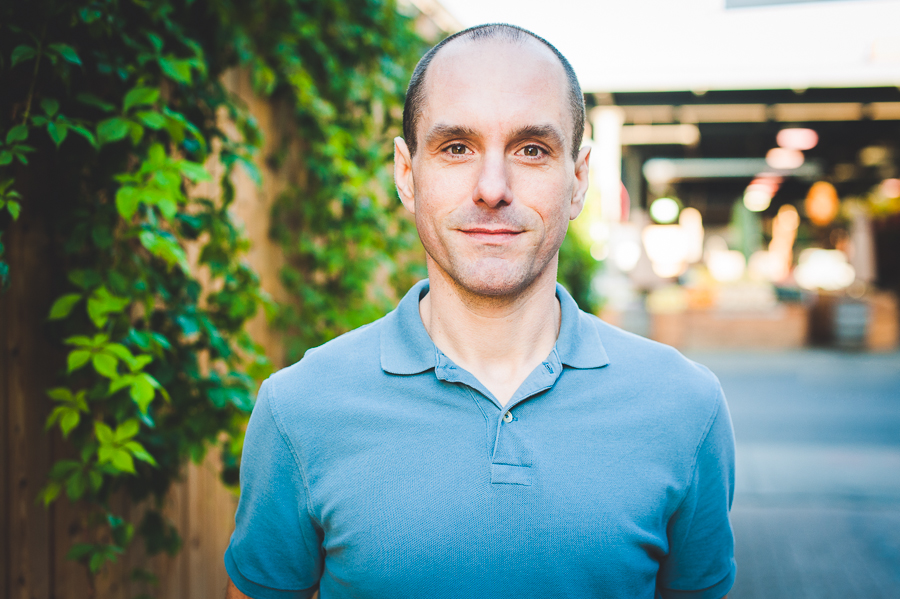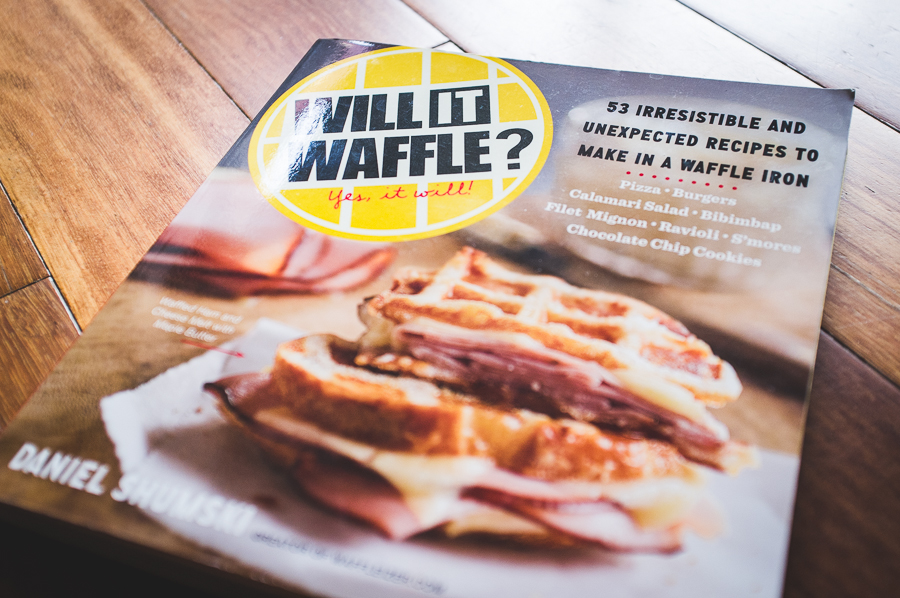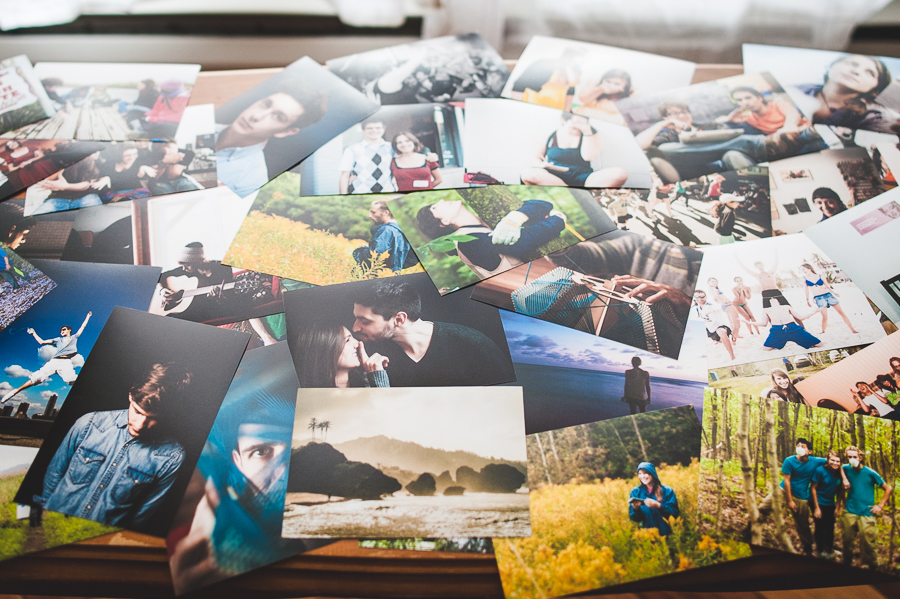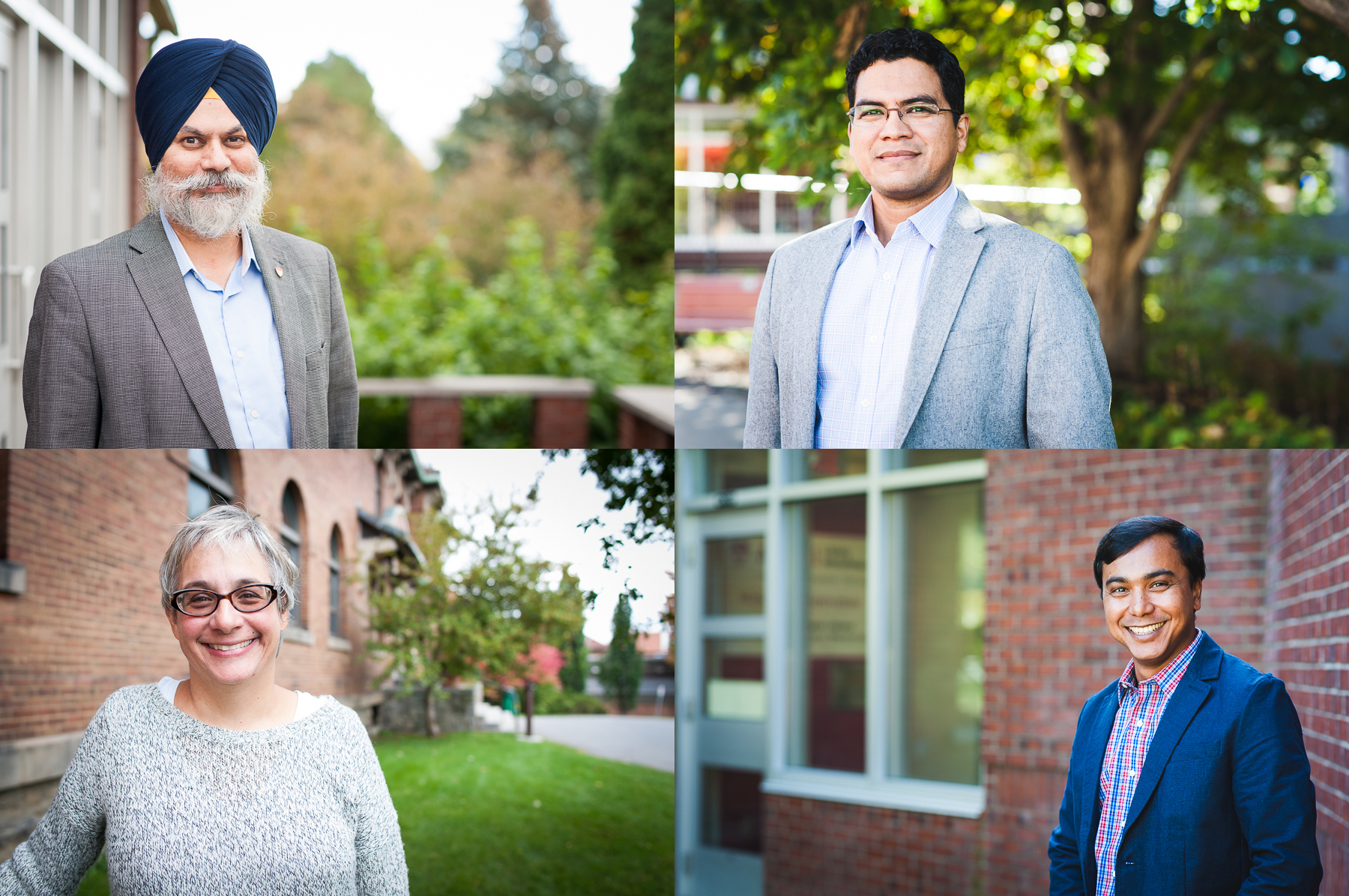About a year ago, after getting the green light from Marc Rowland (co-founder of Montreal Improv), I did a quick personal photography project with Montreal Improv’s house teams. I thought it would just be a one-time thing, but to my delight, it led to further connections down the road.
My Email Strategy to Reach Inbox Zero Every Day with Gmail
Case Study 02 | Portrait in Jean-Talon Market
Background:
For this case study we’re going into a more typical portrait assignment. Daniel Shumski contacted me a few months ago. He’s a food and travel writer, and the author of the fun and adventurous cookbook Will it Waffle?: 53 Irresistible and Unexpected Recipes to Make in a Waffle Iron (more on that later, including photos of something exciting we tried recently). Daniel asked for a few portraits to promote his next special cookbook.
Project description:
A portrait with natural-looking light in a setting that suggests food, without being too explicit or obvious.
Process and planning:
We brainstormed locations, and after ruling out cafés, grocery stores, and kitchens, we decided to go for portraits in a market. Jean-Talon Market came out as the winner, since a quick Google Streetview walk in the Atwater Market revealed big poles between each stand that would be hard to work around. Jean-Talon Market is also much larger and has more alleys for us to shoot in (and it has a better selection of produce with lower prices!).
We created a mood board on a Google Doc and initially wanted Daniel to carry one of those paper grocery bags with some baguettes, but after seeing so many hilarious and cheesy stock photos of that, we decided to drop the idea.
Then the next thing was just to find a time to shoot when 1) the stands had fruits on them and 2) the market was not too crowded. Wednesday at 7AM it is.
Result:
This ended up being my favourite shot. I like the soft backlight. I think the subtle background, with its blurry shapes and colours, gives our brains just enough hints that the setting is a market, without explicitly screaming MARKET MARKET MARKET. You see the picture and you think Hey. This guy looks like he knows a thing or two about food. I wanna buy a cookbook from him.
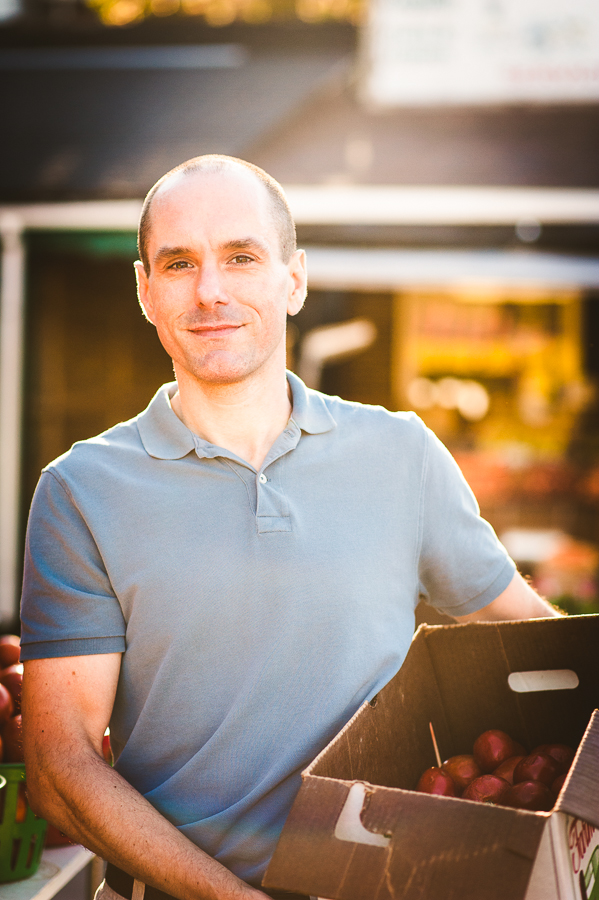
Take-home messages:
- Staged photos - When you stage a shot, the BIGGEST challenge in my opinion is to not make it look staged. For my Montreal Artists, I ask all of them to actually DO work. I tell them beforehand to make sure they have something to work on. If they “pretend draw”, it’ll look stiff. I get my best results by letting them draw, looking and waiting and capturing the moments where the movement looks fluid. In Daniel’s case, I told him to actually walk through the aisles, go up to the stands, pick out some fruits, and so when I’d say “Now look up to the camera”, he just needed to turn his head towards the camera and his body would already look natural.
- Photos in public - I’m always aware of people around us when photographing my subjects in public. Of course, I don’t want to include people in the background of my shots that shouldn’t be there, but more importantly, it can be extremely distracting for subjects to be photographed in front of others. People passing by will naturally be curious and will stare. Even when they’re not IN the shot, I’ll wait for them to walk past us before lifting my camera up. So bottom line: make sure privacy is one of the considerations when choosing locations and time of shooting, and be aware of the people around you and your subject when you're taking portraits in public.
Waffle Time!
OK check this out. Claudia and I wanted to try something fun from Will it Waffle? and we went for Waffled Onion Rings :O ! Of course in a waffle iron, the result won’t look like a typical onion ring, but this recipe kept the essence of onion rings with the same delicious taste and crunch.
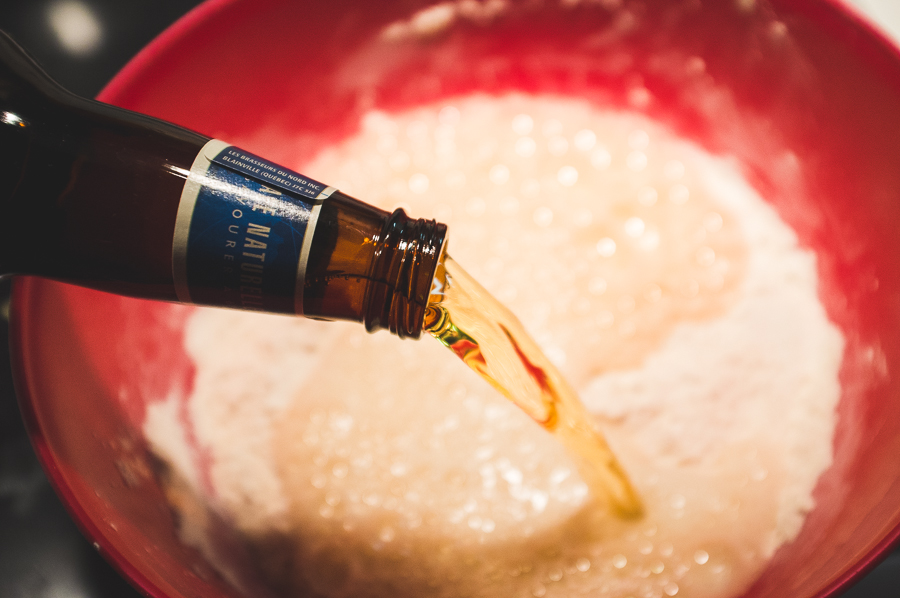
Beer batter!

The result was delicious waffled onion rings (this piece was part of a giant ring) with a little spicy mayo dip we made. (The next recipe we'll tackle will be the Waffled Hashbrowns with Rosemary.) If you want to try it out these fun adventurous recipes yourself (or order it for someone - Will it Waffle? + a waffle iron does sound like a great gift idea), check out the link here. I'm looking forward to whatever Daniel is cooking up next!
Thanks for reading! Keep up with these blog posts by following my Facebook page.
How to Avoid Burnouts as an Artist / Freelancer
Typically, for most photographers, graphic designers, and artists, what gets us in the game in the first place is an interest in the craft itself. With our very first clients, we’re ecstatic that we get to be paid for what we love to do, but many of us quickly realize that we don’t always have the same freedom in our craft when it comes to freelance work. For example, time or budget constraints may be imposed on our work, or there could be differences in vision between us and our clients. Over time, working to serve others exclusively can become draining, and in the worst case scenario, it can lead to a complete burnout, where the artist loses control and even starts hating her own work.
I have three strategies that I use to avoid burnouts.
1. Find something other than the passion in your craft to keep you going
Your “passion for the craft” got you in the game in the first place, but what will keep you motivated? A lot of photographers say that they’re “passionate about photography”. That’s great, but it wouldn’t be enough for me in the long run. There needs to be something deeper.
Take my portrait photography for example. I realized that each person who comes to me for headshots and portraits has something in common. Whether the headshot is to be used to promote a new book, to be displayed on their very first website promoting their art, or to be used for a big audition, each person who contacts me is about to embark on a new exciting project. I'll absolutely relate to their stories on how they got into their respective crafts and started their businesses, since I was there not that long ago when I made the jump from biology to photography. They’re about to put something out into the world for the first time that they’ve been working hard on, and I’m just there to help with my photography. What drives me for these portrait assignments is not a passion for photography. It’s my interest in my clients and their projects, and my ability to help them and propel them forward in what they love to do. Photography is just how I do it, it’s just a tool. If I lost an arm and the ability to take portraits, I’d still want to serve the same people, just via another medium like web or graphic design. I’m passionate about photography, yes, but there’s something beyond that passion that keeps me going.
2. Be selective with the type of work that you do and the people that you work with
In my very first year as a photographer, I would do all kinds of assignments that weren’t congruent with why I’m a photographer or who I want to work with. Wanna hear a few examples? I took hundreds of photos of Converse shoes while doing product photography for a clothing company. I stood in the smelly perfume section all day at The Bay in a Dior stand and photographed people after they got their make up done. I took photos of sushi. I was all over the place, taking photos of random things I wasn’t inspired by. (I do love eating sushi though.)
Now, if I’m not excited or inspired to be working with someone on a project, then I believe that there’s someone else who is a better fit than I am, and I say so to the client. I only want to produce my best work possible and I know that only working with the people I’m meant to be working will allow me to do so. And if you manage to fill your calendar only with assignments that you’re excited to work on, you’re more likely going to avoid burnouts.
3. Create your own personal projects
When I say personal project, I’m talking about projects that you create for yourself rather than for clients. If you’re a freelancer on the verge of burning out, personal projects can help you take back the freedom over your craft that you’ve been longing for without any limitations on your vision, and without stressful deadlines. By doing personal projects, you go back in time to when you just got started in your craft, when you had full control on the pieces that you created. (If you're interested in my upcoming personal project about fluffy wool sweaters and the people wearing them, click here to read more about it.)
You can (and in most cases should) display these projects on your website and share them. This shows prospective clients the type of work that you want to do / can do. We’re typically hired for the work that we show. And by being selective and thoughtful about the personal projects that we do and display, we’re more and more likely to get clients who hire us for that kind of work. And when we fill our schedule with the assignments that inspire us the most, we’re much less likely to burnout. Personal projects are useful for other reasons as well:
- If you suspect some downtime ahead, where fewer assignments will be coming in, personal projects can help keep those creative muscles active so that when a rush of requests comes in, you’re not rusty.
- You get to explore new techniques in low-pressure situations. If I buy a new lighting modifier, I’m not going to try it out for the first time on a client. I don’t want to jeopardize an assignment. I’ll either practice it on my own or use it in low-pressure personal projects.
- It’s an opportunity to work with potential collaborators you’ve been wanting to work with.
- You can use personal projects for charity, or to help organizations and people who would otherwise not have the means to hire people in your line of work.
Hope this was useful. If you’ve enjoyed reading this and would like reading more, the best way to follow me is to Like my Facebook page, where I’ll be posting my own work and sharing recent blog posts.
Case Study 01: Staff Headshots for Macdonald Campus
This is the first of potentially many more client case studies. (I’m re-shuffling my blog categories around as there’s some upcoming remodelling of my website and blog!) For these case studies, I’ll focus less on the story of my subjects and more on the assignment itself, the photography, and the logistics. The first one here features the staff headshots I took for McGill’s MacDonald Campus. This could be useful for prospective clients and fellow photographers / freelancers.
Background:
When the new Dean joined the Macdonald Campus of McGill University in Ste-Anne de Bellevue, she led a charge to revitalize the faculty website. I still remember applying to grad school years ago, browsing through dozens of webpages of professors from different universities and comparing them. For many professors, their page was my first impression of them. Here’s what the website looked like before the intervention:

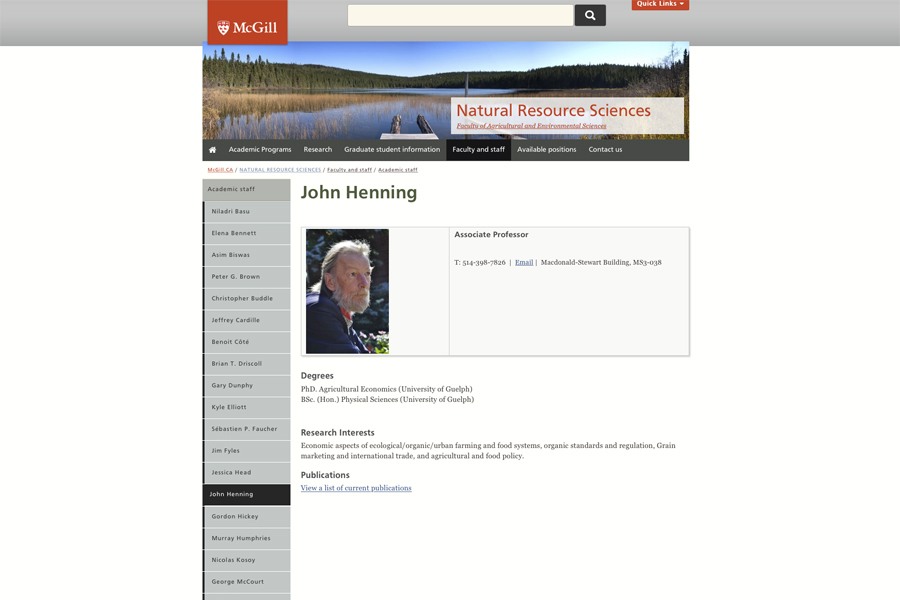
Because all photos were staff-submitted, there was no consistency among photos. Most photos were of very low-quality, and many had poor lighting. Some staff members were even unrecognizable, either due to the photo quality or because the photo was simply very outdated.
Description of the assignment:
Update the faculty and staff headshots for the Faculty of Agriculture and Environmental Sciences of McGill University (5 departments: 120 professors and non-academic staff). Requirements for the headshots: consistent in style, composition, and quality, with a variety of different out of focus backgrounds.
Challenge #1: Professors are extremely busy people.
Most professors were extremely busy. We therefore had to create a very strict shooting schedule, where each subject had a designated 10-min time slot. I knew that I wouldn’t even be given 10 minutes from each of my subjects, so my aim was to work as fast as possible. I was able to photograph many subjects in less than two minutes (and sometimes, I wasn’t given a choice). In an ideal world, my subjects would have more time with me and would all be excited with the idea of being photographed, but I understand that it’s not possible when you have 120 busy people. I made sure that my camera equipment was ready to go before my subject arrived, I constantly kept checking how the sunlight changed, and I made sure to greet them all subjects with a warm welcome - I only had a few seconds to get them to be comfortable with me!
Tips: If you have time-sensitive subjects and need to work very quickly, plan and scout locations beforehand (this should be part of your work and in your contract). I pre-selected several locations and noted down the optimal times of day for best lighting and I also paid attention to the amount of student traffic that each location had. When so many busy schedules are at stake, plan very carefully and prepare contingency plans in case of bad weather, people showing up late, and people not showing up at all. A single subject arriving late can trigger a domino effect. Run different scenarios in your head and decide beforehand what you will do if it happens. Make sure your contract addresses the possibility of these issues if necessary.
Challenge #2: Multiple stakeholders in the assignment.
In a typical headshot session, the person controlling the budget, the person being photographed, and the person I communicate with are all the same person. For this assignment, my client was split in three: 1) the Dean (who had a vision for the project and took budget decisions), 2) the 120 subjects to be photographed, and 3) the contact person (my only direct contact throughout the planning). Situations like this can create potentially competing interests among the three client heads.
Tips: Any time your client is split into multiple parties and stakeholders, you have to be extra alert with your communications, making sure that the important information is passed down to the relevant people. When interests compete, understand whose decisions you should be following, and manage expectations as best you can.
Result:
The new portraits have been added on the website. (Some of the staff could not be photographed, so their pages remain as before unfortunately.) The new staff headshots result in a more professional look in my opinion. More importantly, the people who hired me are happy with the results!
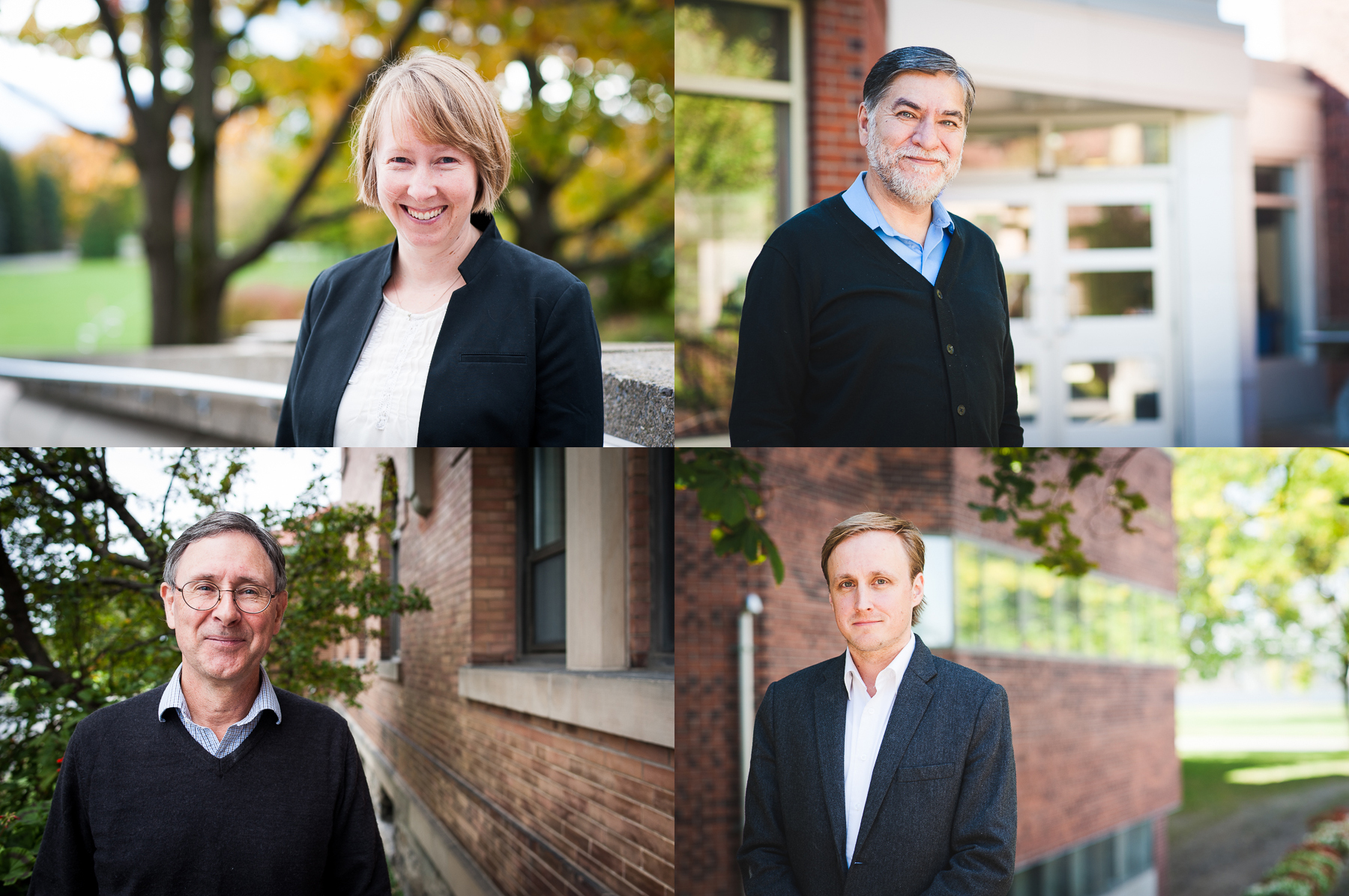
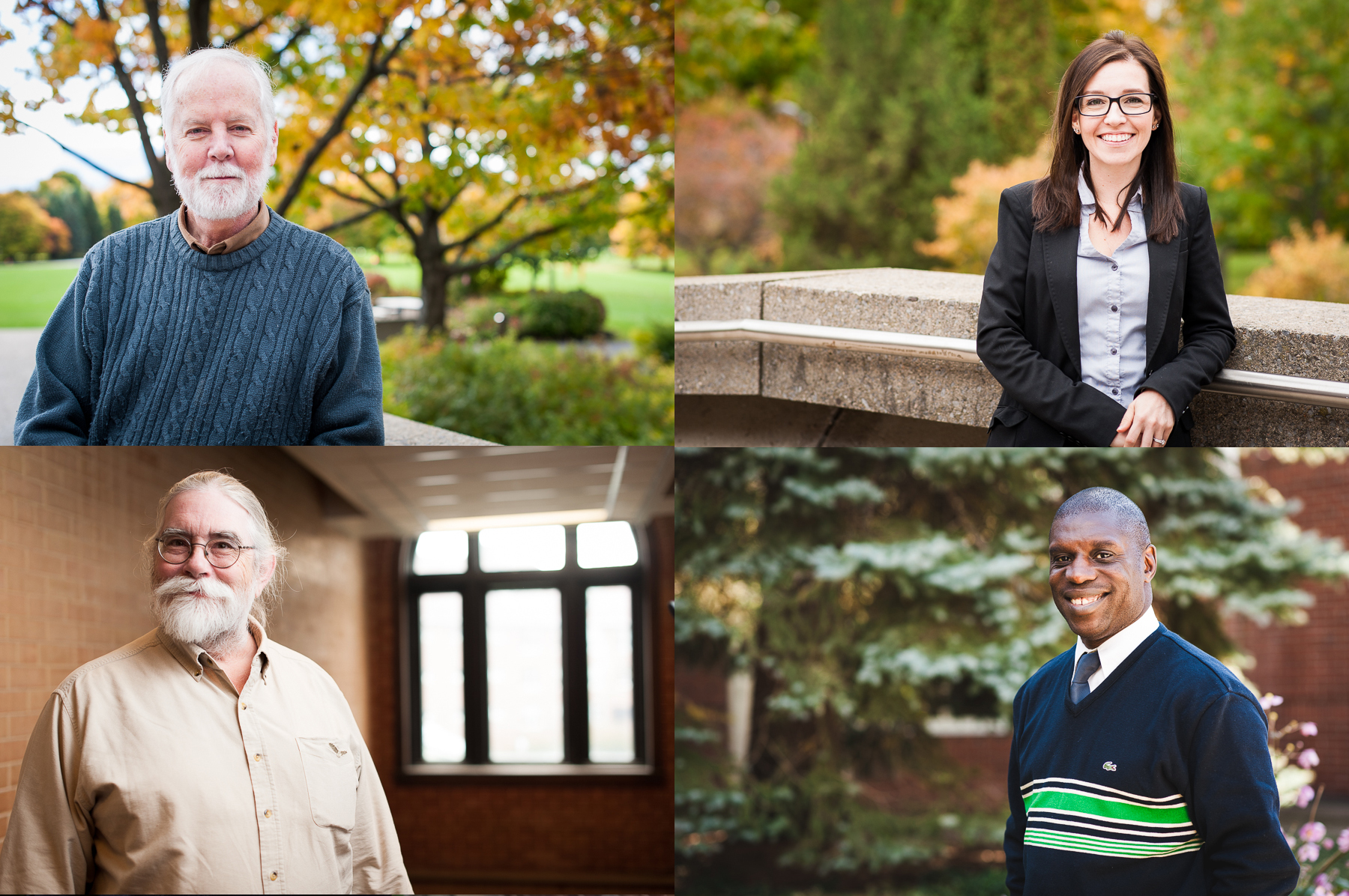
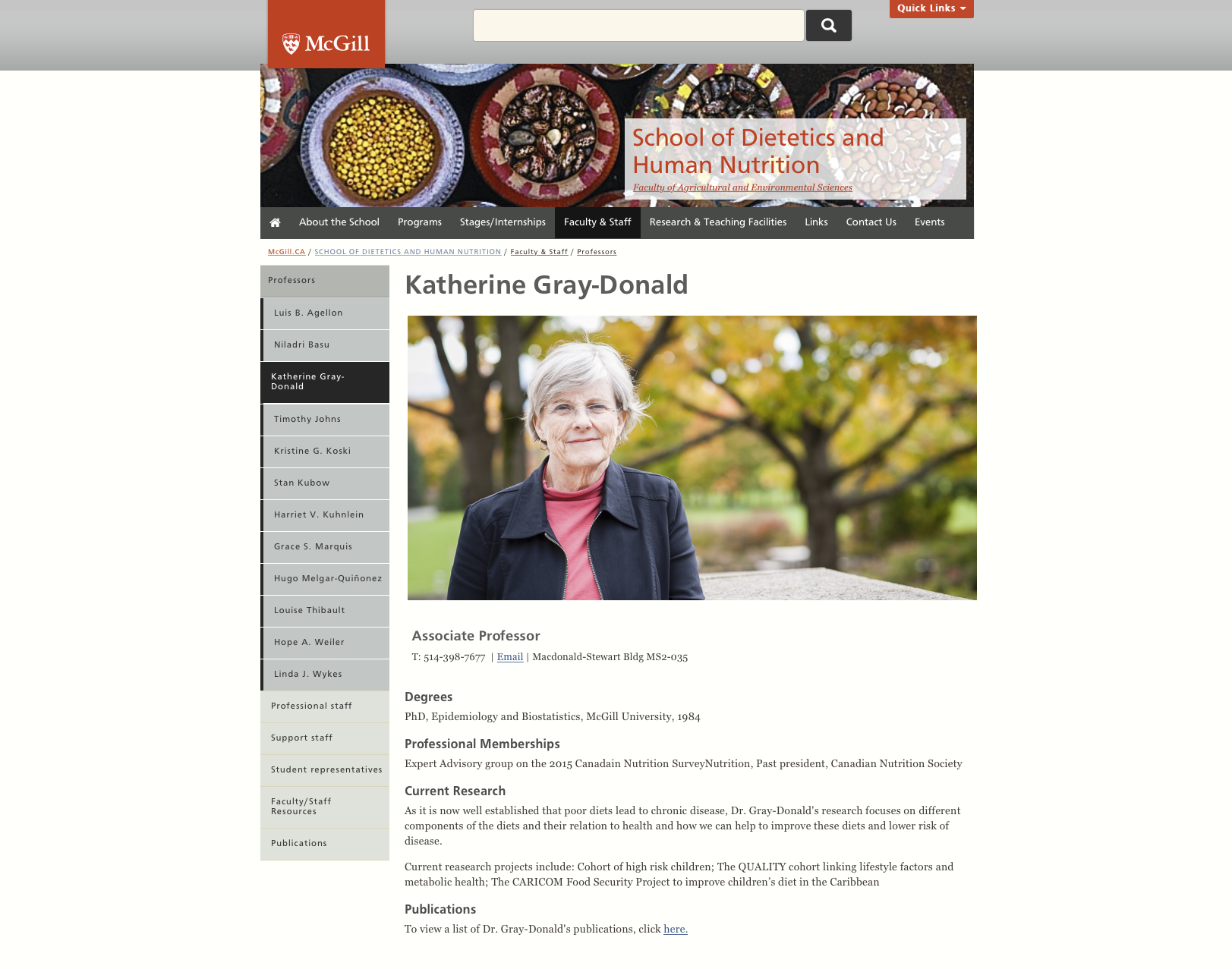
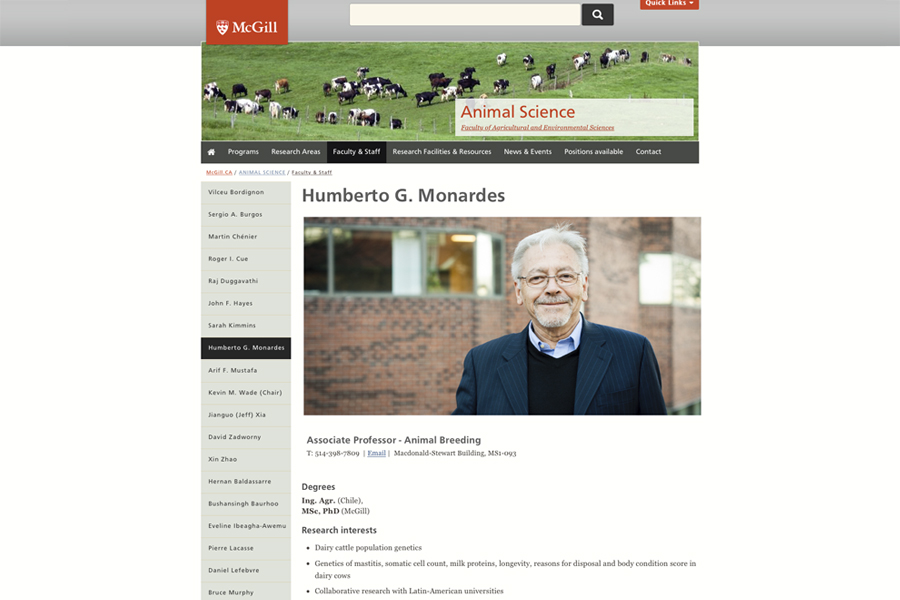
Take-home messages:
- When you only have a few seconds with each subject, make sure you do everything you can before the subject arrives (prepare equipment, scout before). Make sure you're also ready mentally. You have only a few seconds to make an impression, to get them to trust you, and to create a good headshot.
- When you have assignments that have multiple stakeholders, make sure you're on point with your communication with everyone, anticipate any competing interests, and know whose requests to give priority to. Understanding each stakeholder's point of view will make it easier to explain clearly your inability to fulfill all requests.
- Make sure your contract covers everything! Don't just think about the photography, think of what happens before and after a shoot and the amount of time you're putting in different tasks such as planning, scouting, delivering images, creating galleries, etc.
Thanks for reading! If you find this kind of stuff interesting to read, the best ways to keep up with my latest posts is to either RSS my blog, Like my public Facebook page, or signup to my photo newsletter below.
November Wedding in the Montreal World Trade Center | Tessa & Alex
OK so picture this: Five years ago, I’m sitting in this gruelling 6-hour molecular bio lab with my oversized lab coat and I have no idea what I’m doing. My lab partner Aynsley is to my left - she has no idea what she’s doing either. We seem to be always only one step away from a fatal explosion. The next two to her left are Jan and another Alex. They of course have their stuff figured out. They’re pipetting liquids into thingies, they can actually identify the different squigglies under the microscope, they’re putting things that are supposed to be put in dry ice into dry ice, and they’re somehow finishing the in-lab assignments and leaving the lab early. Fast-forward five years, the four of us are at McGill University once again, except this time, we’re in the Birks Chapel, and Alex is getting married. (The other Alex, not me. *sigh* I guess he can be Alex and I’ll be the other Alex for this blog post.)
The wedding day started at Scotch & Scissors, a barbershop where Alex and his groomsmen got their shave and their scotch. By the time I got to the bridal suite to photograph Tessa and her bridesmaids, the floor was covered with Fairmount Bagel sesame seeds. Would’ve been better if the floor was covered with St. Viateur Bagel sesame seeds, but oh well.
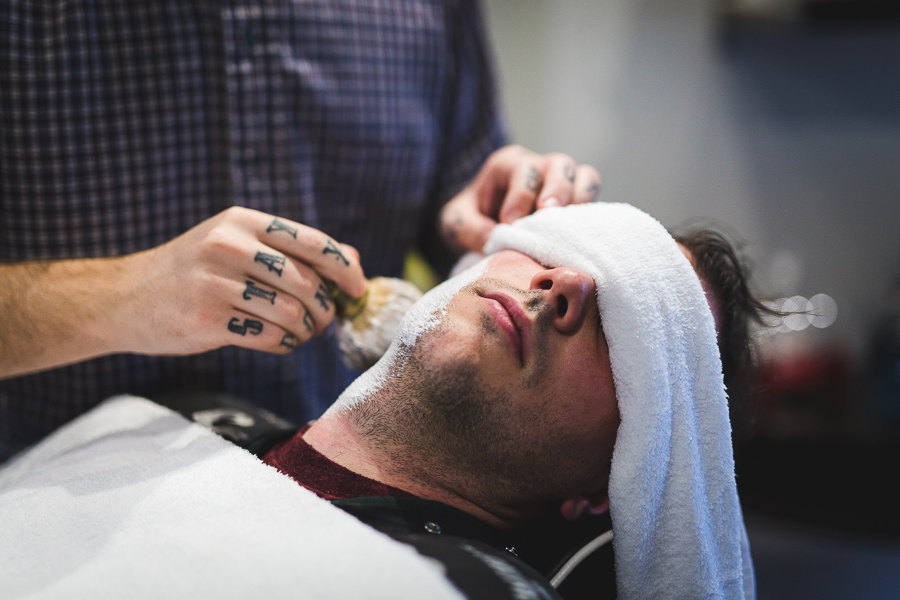
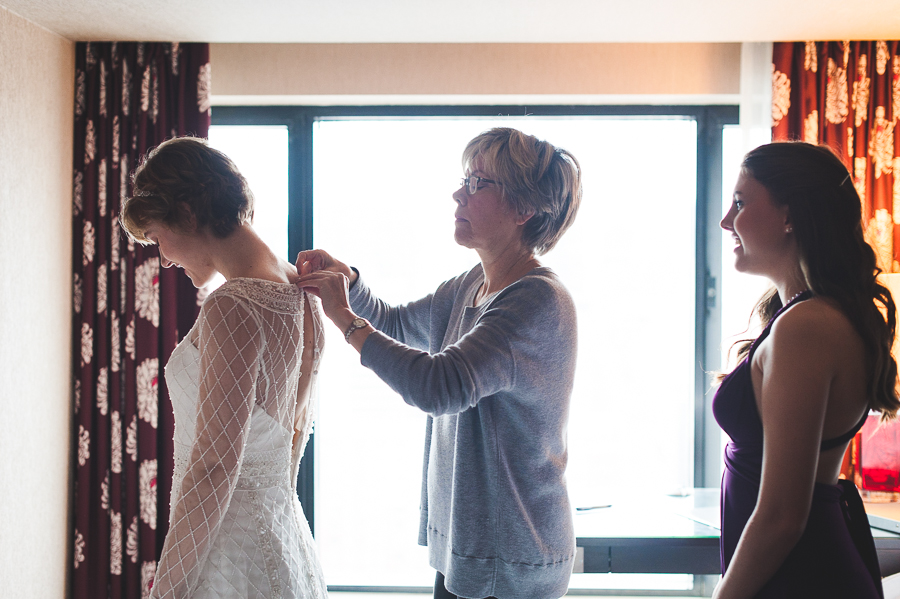
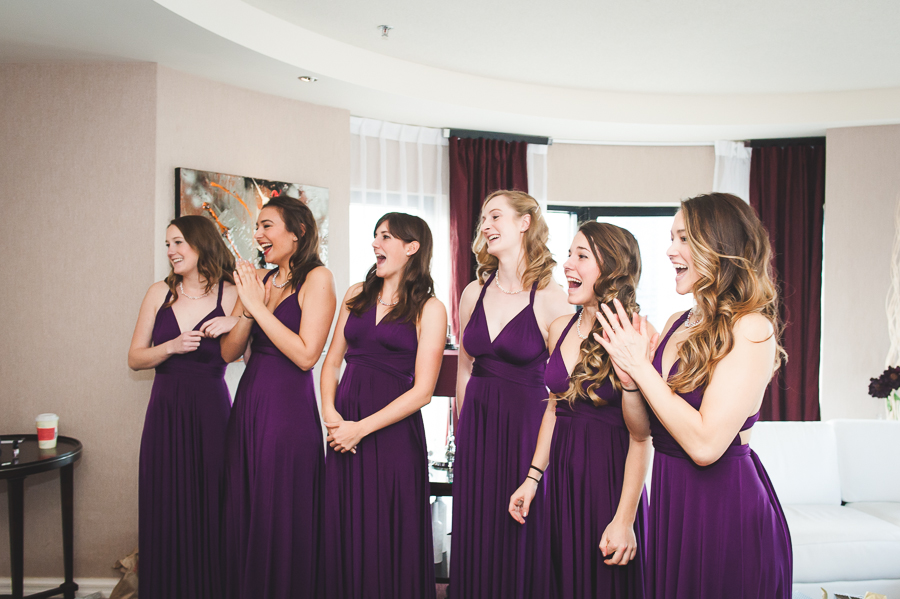
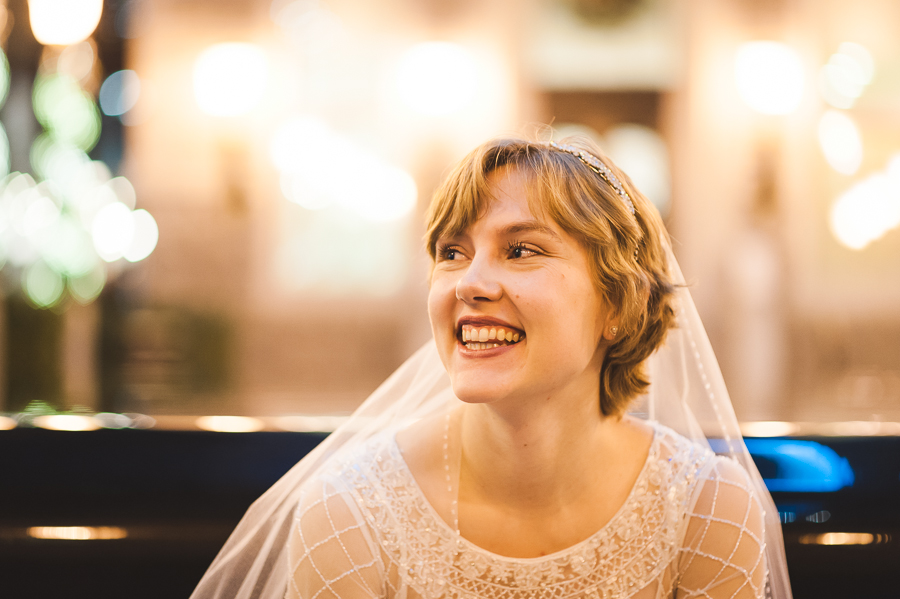
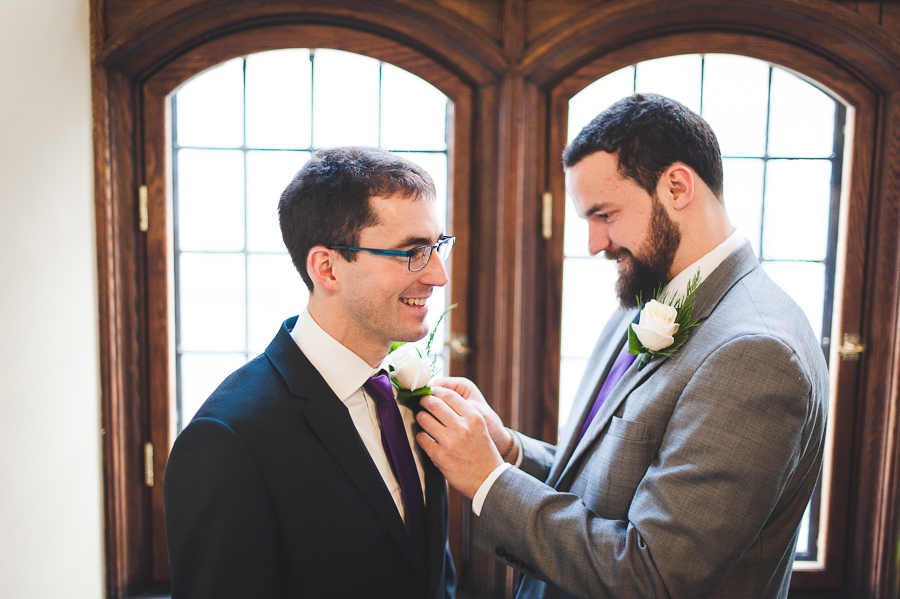
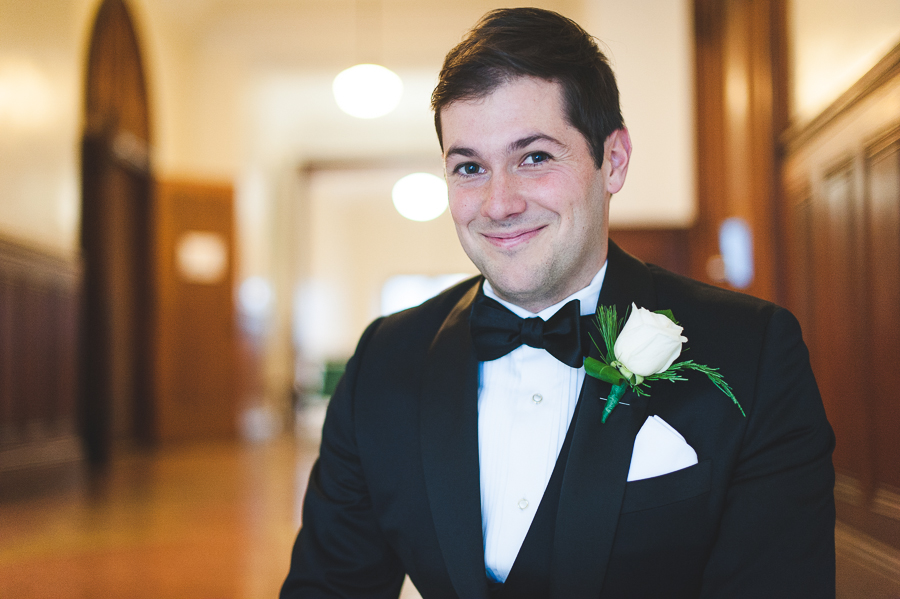
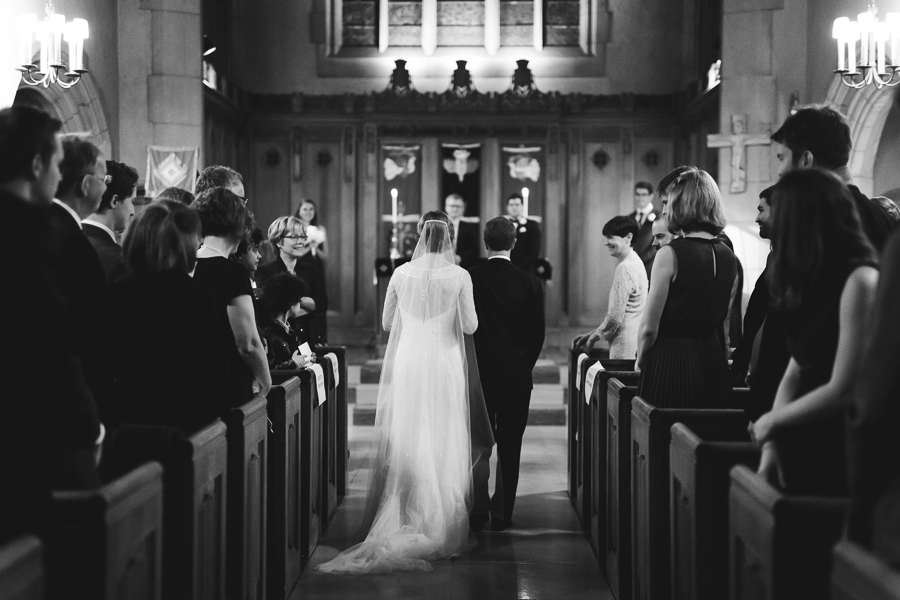
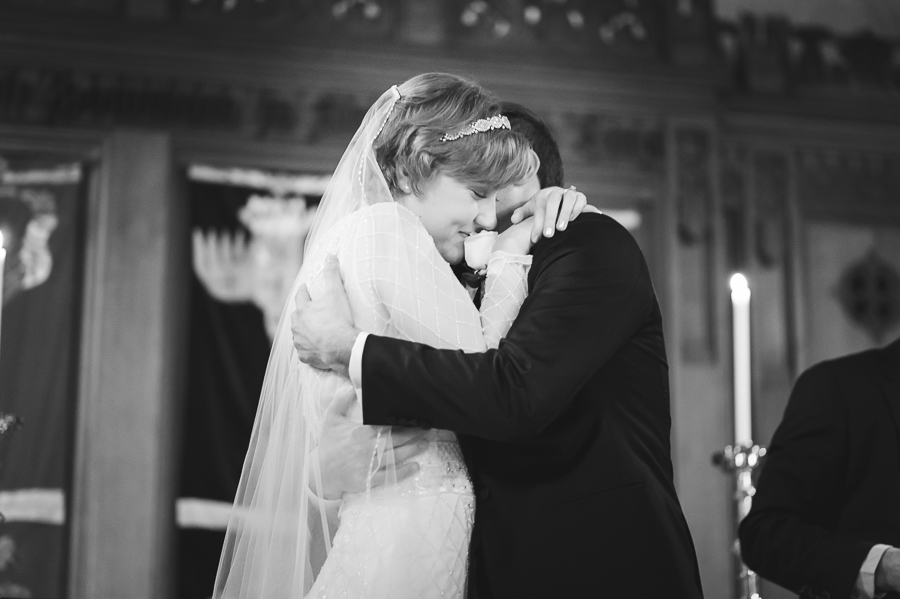
After the short wedding ceremony in the Birks Chapel on McGill campus, we headed to the Ruelle des Fortifications in the Montreal World Trade Center / Centre de Commerce Mondial, right by the big Hôtel InterContinental. It’s a pretty sweet spot that looks like an outdoors space. A good compromise for a November wedding in Montreal, where an outdoor reception would have meant 150 lovely guests turning into 150 lovely icicles.
Despite the chilly weather, the wedding was full of warmth (and love, and fun). I don’t think I’ve ever photographed a wedding while it was below freezing outside, but come to think of it, it was quite fitting for them. Tessa and Alex’s story involves skiing and lots of it. They were on the McGill ski club together. The proposal happened while they were skiing on Mont-Royal. The wedding cake was ski-themed. Even my table at the reception was full of wonderful skiers.
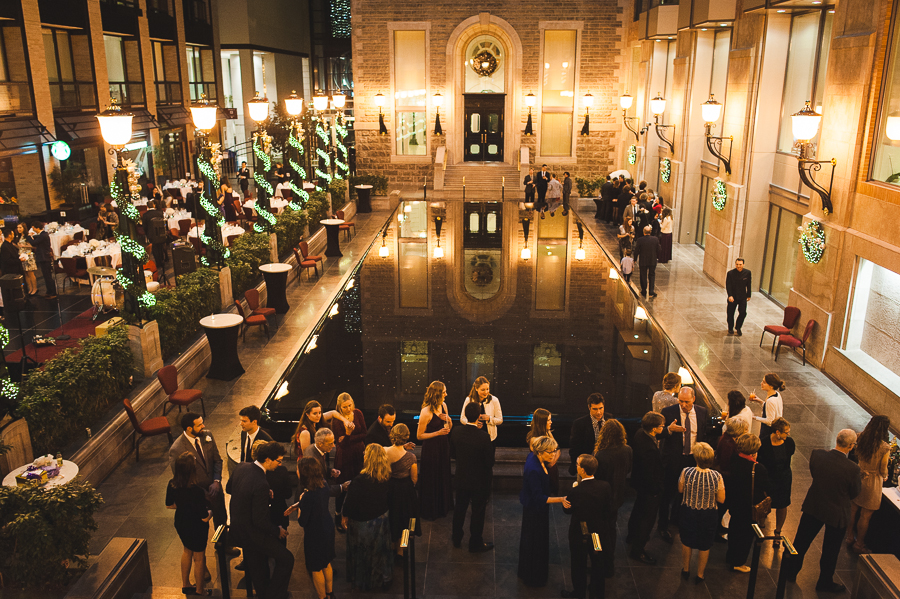
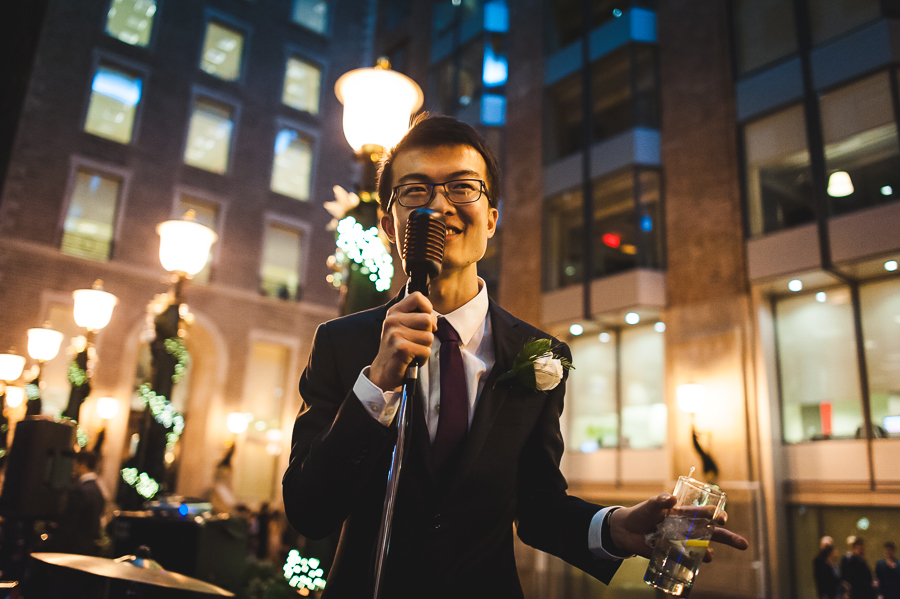
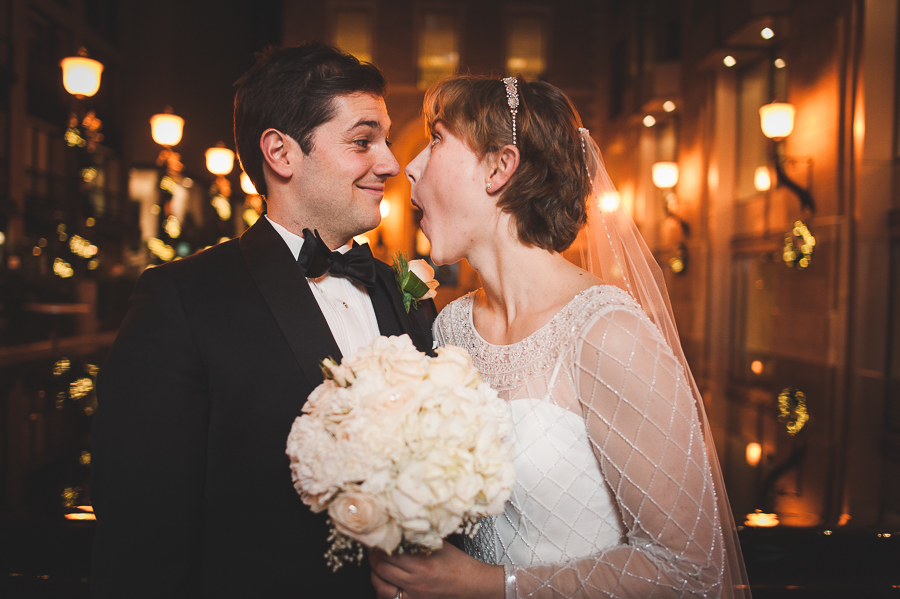
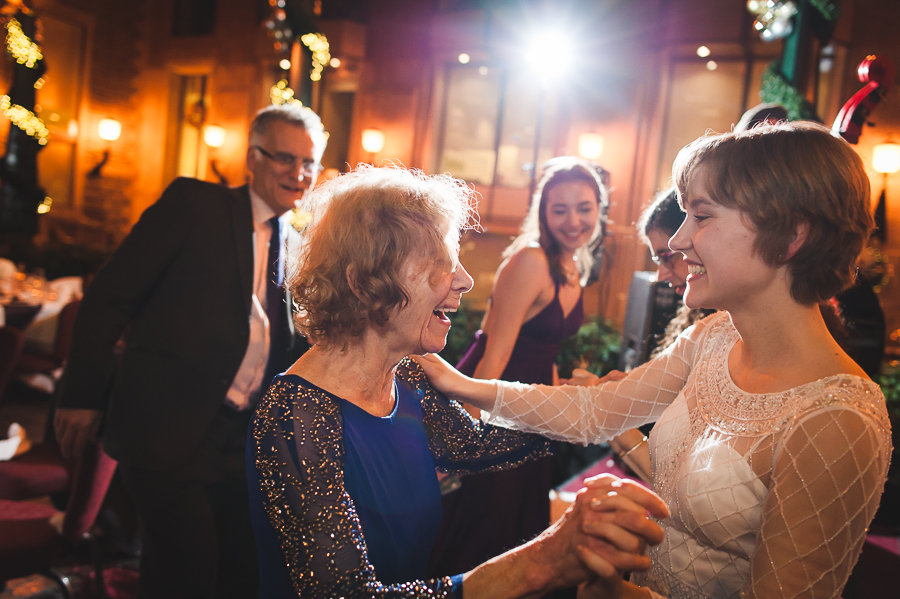
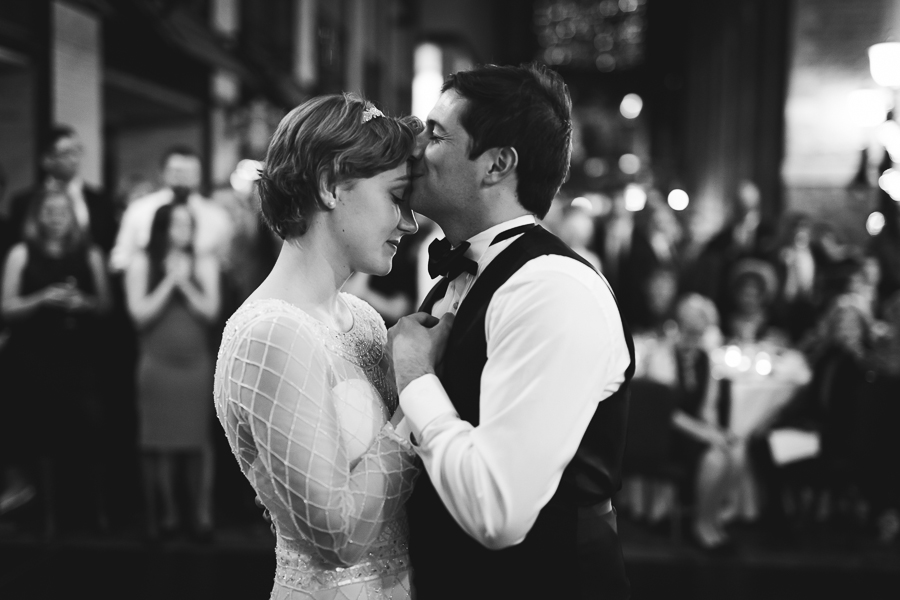
Now the next paragraph is for the photographers out there. The Ruelle des Fortifications is an amazing space to photograph in, but the lighting is tricky. For a November wedding, all natural light is gone by 4PM, so the hall is entirely lit with a mix of very orange streetlights and some greenish fluorescents from the nearby offices and boutiques. The ceiling is made of glass so you can’t use bounce flash, the walls are outdoor brick walls or boutique glass so you can’t bounce off of that either. The two options remaining are cranking up the ISO and shooting wide-open, and using off-camera flash (straight-on flash should not be an option for aesthetic reasons in my opinion). My awesome second photographer Julien Catella and I had visited the spaces prior to the wedding and made sure that we brought the appropriate equipment (high-ISO capable cameras, large-aperture lenses, extra light stands and flashes).
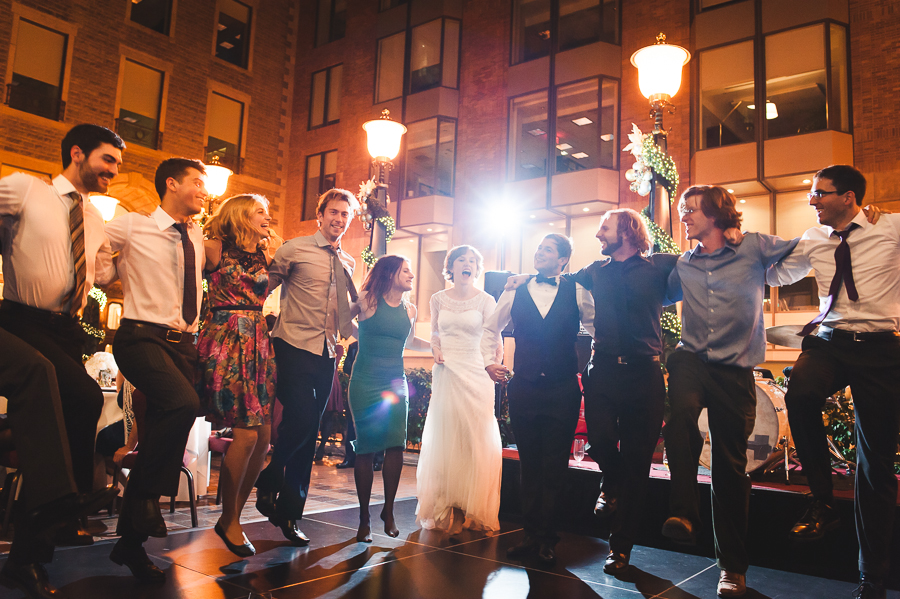
Thank you again Tessa & Alex for the wonderful energy-packed wedding day, I hope you enjoy your honeymoon and this little teaser. I can’t wait to show you the albums when you come back!
For the first-time readers of my blog! I'm inviting you to follow my public Facebook page where I'll share more photos. For the skiers and MOC people who attended the wedding, check out the recent personal project that I advertised on my page, it might be of interest :)
Thanks for reading! Quick shoutout again to my second photographer Julien Catella who did an awesome job.
Montreal Artists: Amelie Legault
Amélie Legault is the 7th artist whose work I'm documenting as part of my Montreal Artists series. Through her illustrations, Amélie has created a beautiful, whimsical, and absurd world where flamingos ride tandem bicycles, lobsters dress up for winter with cozy mitts, and pigeons go skateboarding. (The last one could totally happen in real life though. Pigeons are fearless.)
She starts by sketching drafts of her animals, experimentally bending their limbs around bicycles, while remaining (loosely) within the bounds of physics.
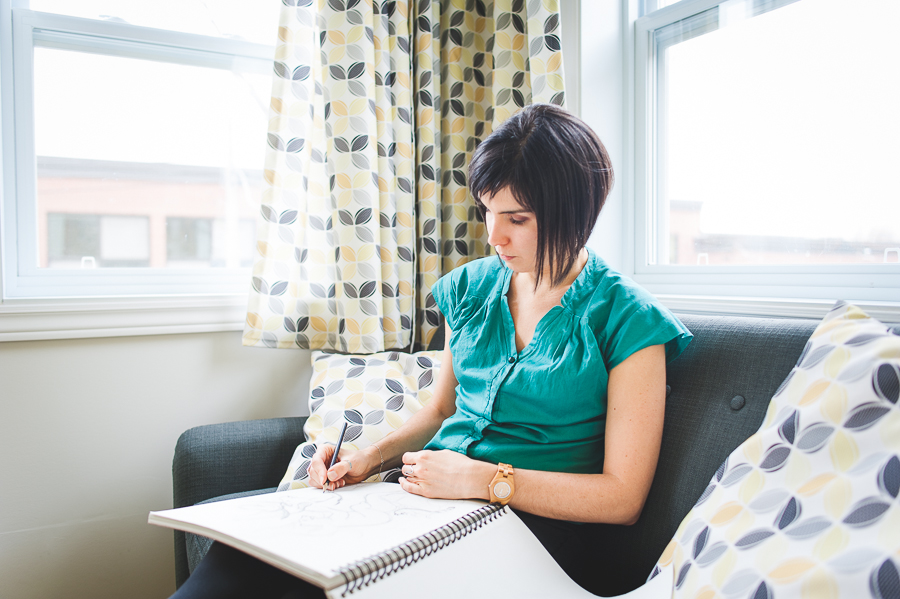
Once she’s satisfied, she inks the outline of the animals.
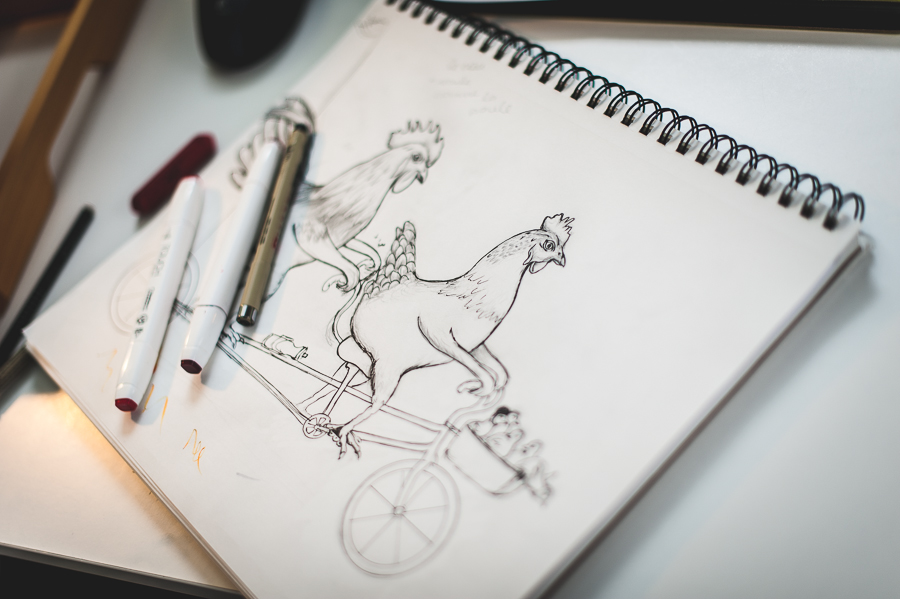
On a new piece of paper that she overlays over her inked sketch, she’ll take out her arsenal of markers and start creating her signature look with bright, vibrant gradients of colour.
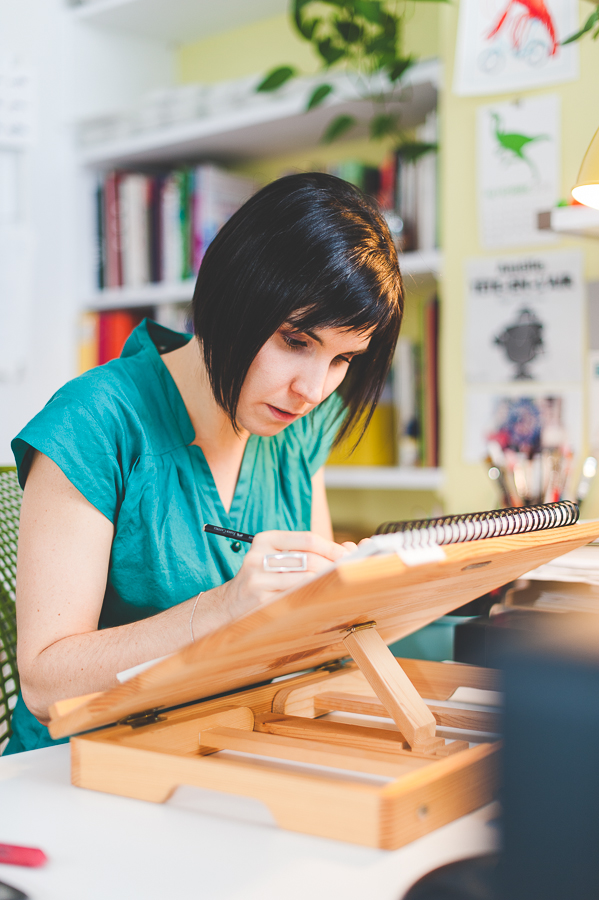
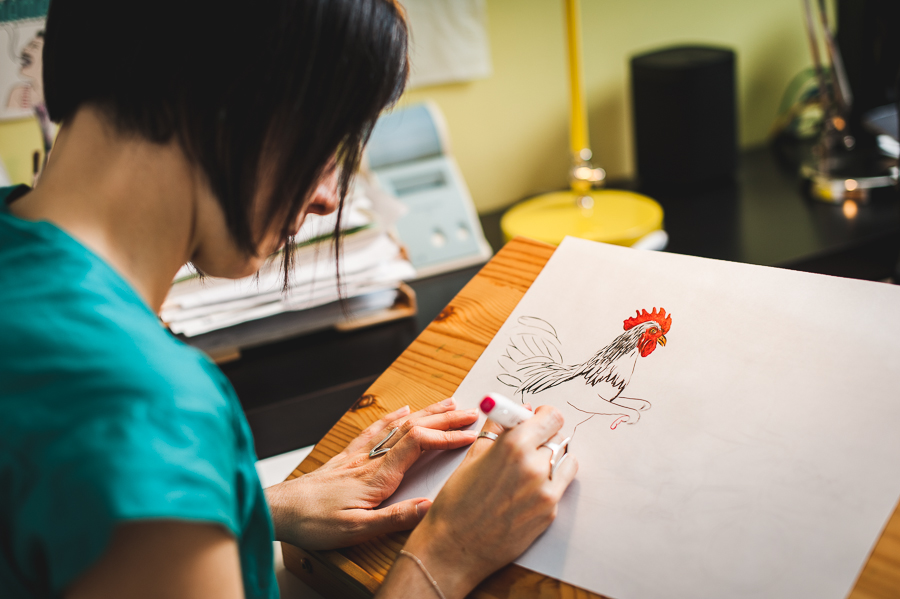

The only thing left is to scan and print them. Amélie creates calendars, prints, and all sorts of cards.
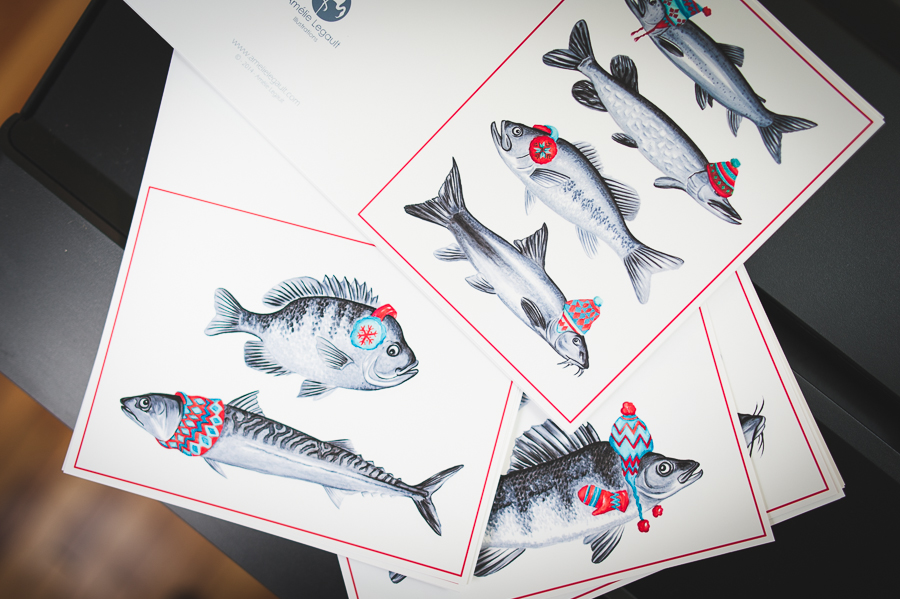
When seeing her work for the first time I didn’t realize that it was all done by hand. I thought that some of the colours were added on the computer, or the colours retouched somehow. But the originals are just as clean, bright and vibrant as her finished products. Despite the impossible scenarios Amélie creates, she draws her animals in a realistic and surprisingly anatomically plausible manner. I’ve never seen a giraffe riding a bicycle before, but I’m pretty sure it would look like that. I love the frivolous details and ironies she adds, like the tiny bike helmet on the massive shark, the ear-muffs on the fish, or the wood in the beaver’s picnic basket.
Unfortunately for Amélie, she can only surround herself with imaginary animals, since she’s allergic to pretty much all of them. :(
Check out Amélie's full portfolio here or go straight to her Etsy store to see what products she has. And keep an eye out for the different fairs across Montreal and beyond! There’s a good chance you’ll see Amélie and her unmistakable illustrations! If you're interested in reading the stories of other Montreal Artists, check out the page here.
Meet the 8 Members of my Mastermind Group in Montreal
A few weeks ago, I was thinking of starting my own mastermind group in Montreal. If you don’t know what a mastermind is, read more about it in a recent blog post I wrote about mastermind groups. Just think of it as a study group for self-employed people. I’m finally done with recruiting and found a lovely group of 8 freelancers, artists, and entrepreneurs. Let me introduce them to you! If you’ve seen my portrait & headshot portfolio, my Montreal Artists series, or read my blog, you might recognize a few faces! I feel bad reducing what these people do into a single word, because they do so much more, but here we go:
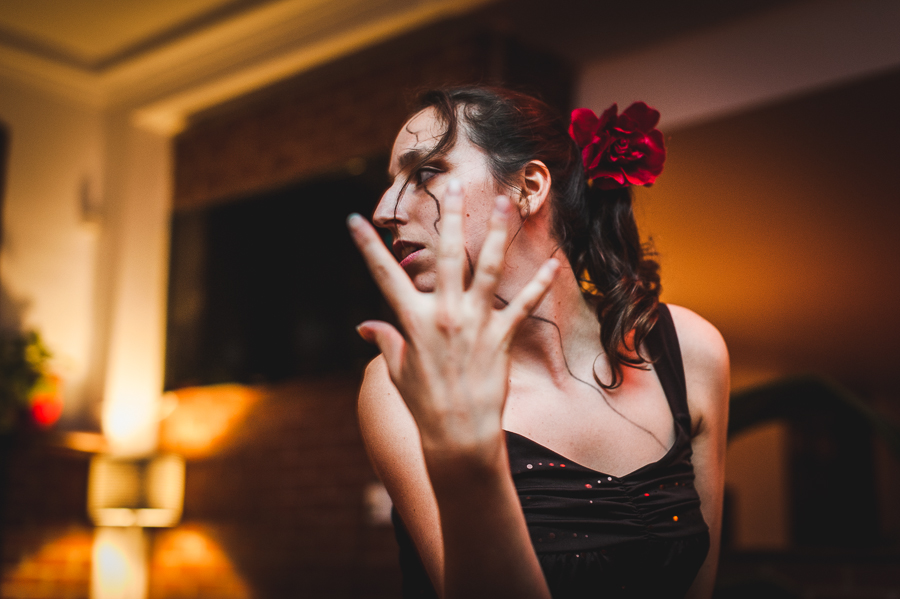
Myriam | Dancer
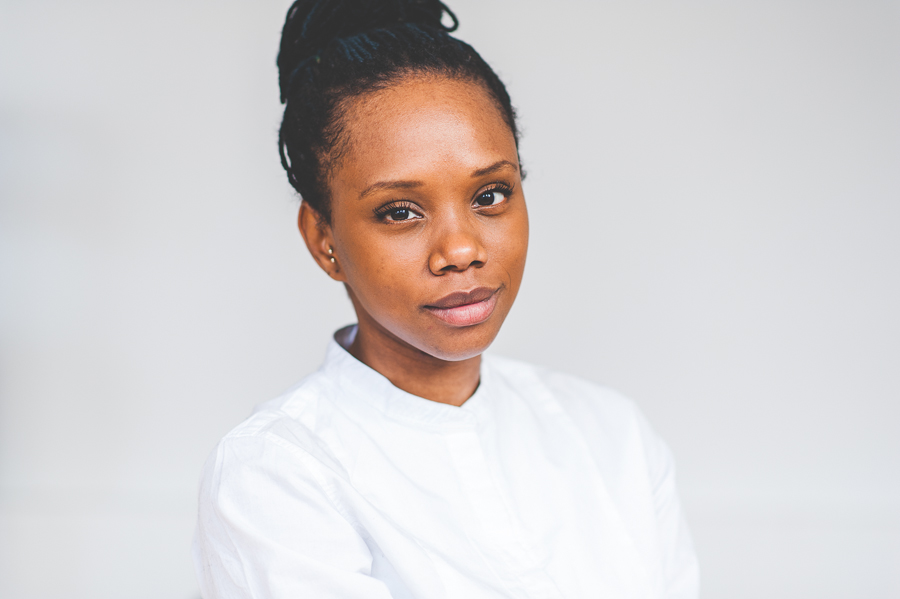
Reyhanne | Entrepreneur

Simon | Marketer
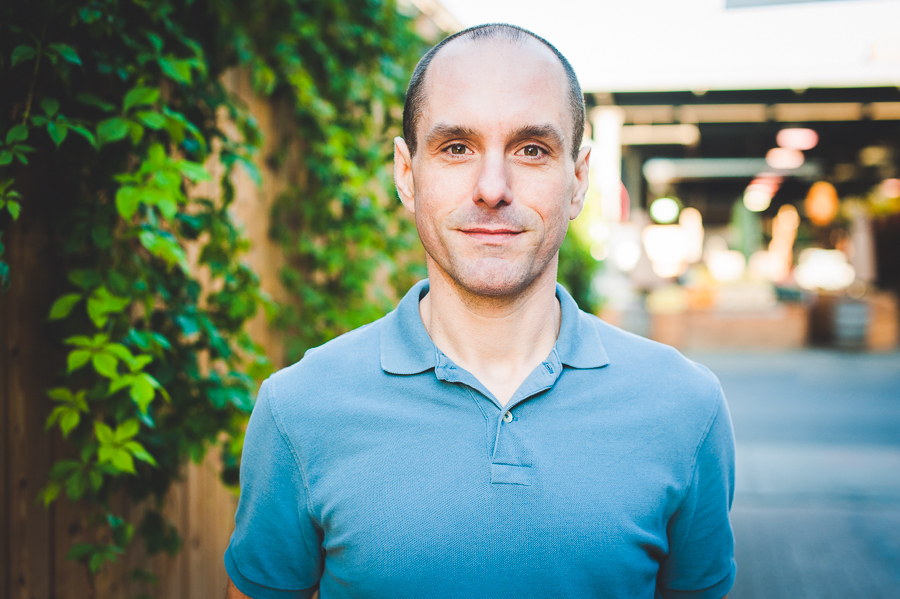
Dan | Writer
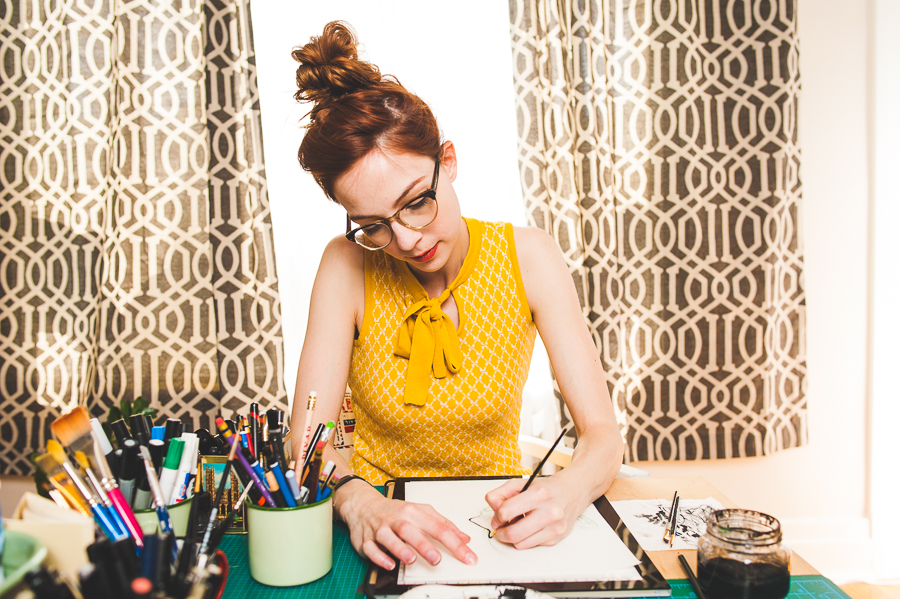
Meags | Illustrator
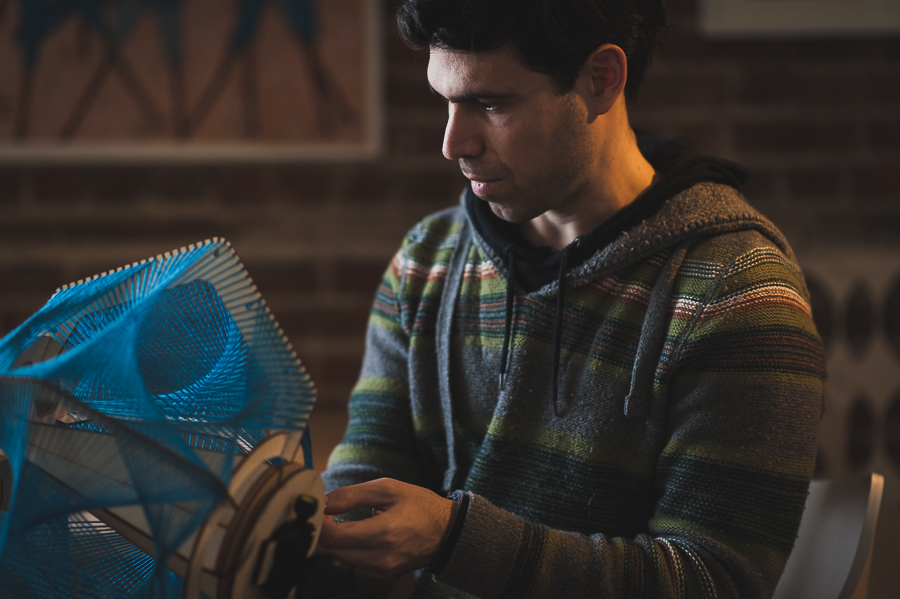
Ariel | Maker
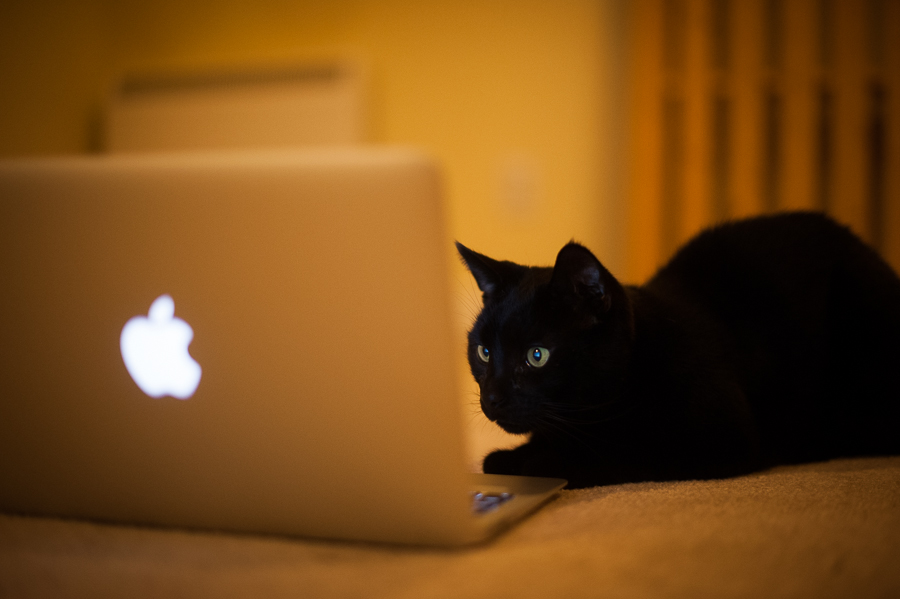
Kayla | Graphic Designer (who I haven't photographed yet, so she's a cat for now)
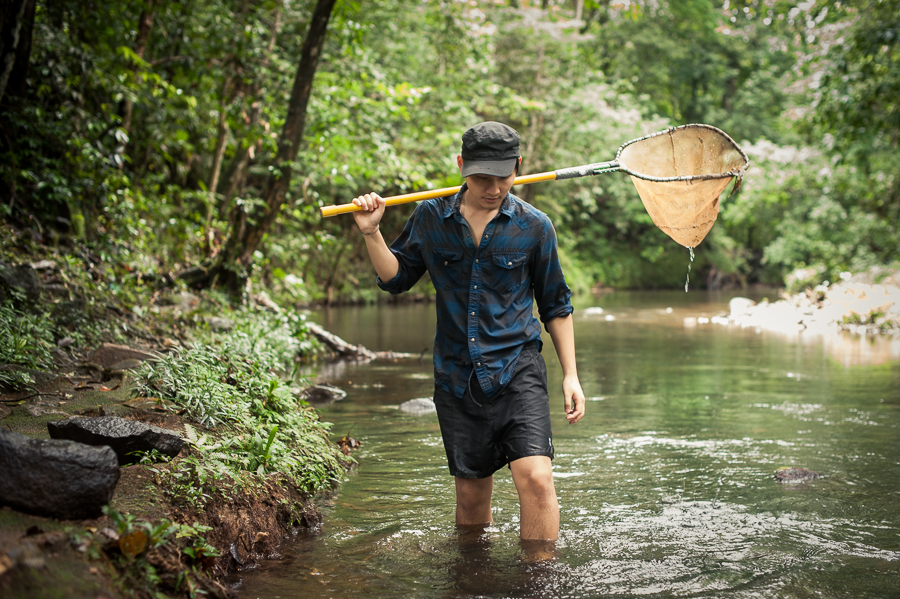
Alex (hey that's me) | Photographer
The group just met for the first time last week at my place, and it went just as you would expect: I sat in an arm chair in a dark corner of the room, cross-legged and petting a cat, and once they all arrived, I announced that I had been expecting them, with a sinister voice of course. It went well.
I love that we’re in many ways a very diverse group. I’m excited to officially start the meetings in a few weeks and I’m sure we’ll have a lot to learn from each other. We’ll be meeting once a month over dinner to talk about different aspects about our respective businesses and projects, and we’ve already brainstormed enough discussion topics for at least a year. I’ll be reporting back occasionally with things I deem helpful for potential fellow freelancers or self-employed people who read my blog. Things like productivity tips, useful books/podcasts, marketing as a freelancer, etc. (Actually, if you're interested, let me know what topics you'd like to read about). In the meantime feel free to peruse (YES! First time I've used that word) my blog or sign up to my newsletter by clicking the banner below. Thanks for reading!
Indoor Natural Light Portraits | Reyhanne
I don’t know if you’re aware or not, but only a third of the photographs in my portrait and headshot portfolio are natural light portraits; the rest are all shot with flash. People are generally surprised when I tell them this, probably because we’re so used to seeing really bad flash pictures, where the use of flash is extremely harsh and not subtle. We don’t instinctively think that flash can create natural-looking light, but light is light, and with the proper light modifiers, you can make artificial light look like natural light. I’m a huge advocate for proper artificial light use, but of course when it isn’t necessary, I leave my lights in my bags. In the case of this recent shoot with Reyhanne, we had a room flooded with beautiful natural light and we took advantage of it.
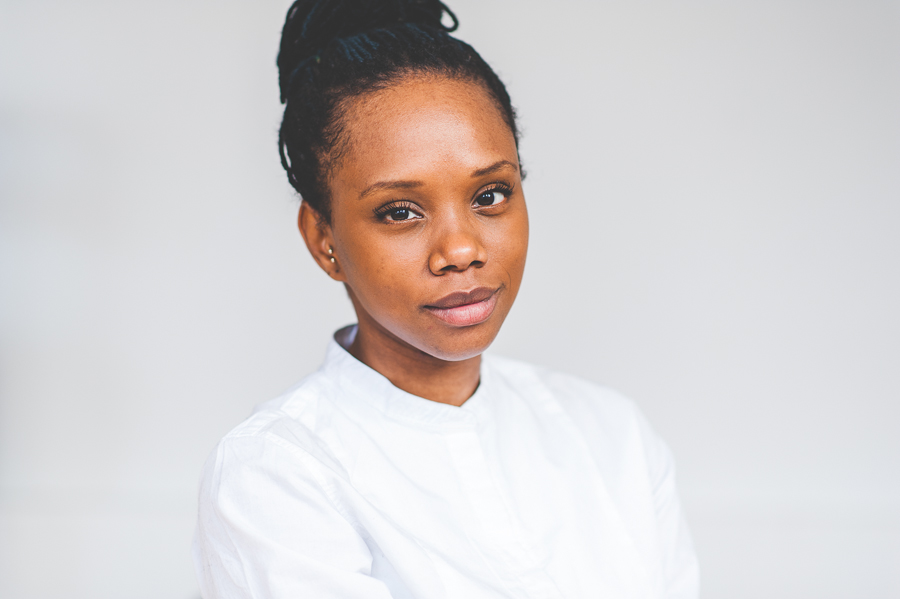
Reyhanne comes from a business management, administration, and human resources background at HEC. I love that her focus is on the ethical and sustainable side of businesses, and she worked as a consultant for different organizations over the years. Now, Reyhanne is starting her own line of natural eco-friendly beauty products, where she’ll be sourcing her ingredients from different parts of the world and collaborating closely with the producers (in a way similar to Ten Thousand Villages). And on the side, she’s also an aspiring yoga instructor (a studio with big windows and beautiful natural light is something we’d both love to have).
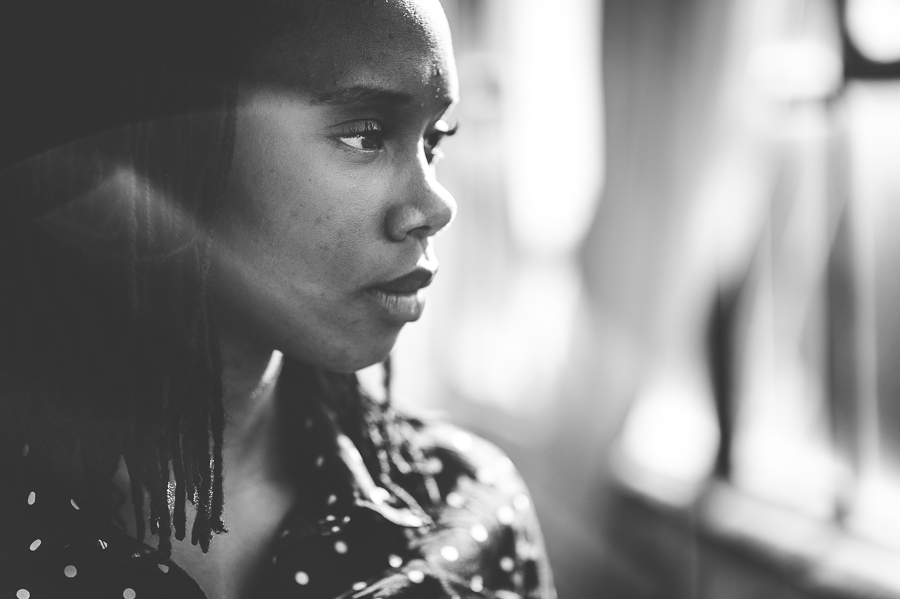
For her portraits, we were aiming for photographs that represented her and that conveyed a sense of calmness, tranquility, and peacefulness. I wanted a natural light look (whether I used natural light or artificial light to achieve it is irrelevant). In the end, we were both very happy with the results. Here's what Reyhanne had to say about me (en Français!):
Consciencieux et attentif, Alex a une approche de la séance de photo que je qualifierai d’holistique: de son écoute des besoins, de la saisie de toute la complexité de la personnalité, de l’offre d’un cadre agréable, à la réalisation même des photos. That's pretty awesome to hear as a photographer. You can read her full testimonial here.
I’m glad to say we’ll be staying in touch - Reyhanne will be joining my Montreal mastermind group! I’m hosting our first dinner tomorrow with the 6 other members, and everyone will be meeting for the first time. I’m excited!
Acting Headshots in my Home Studio | Alina Gotcherian
Alina’s back and you might recognize her! She was in my portrait and headshot portfolio for almost a year after I photographed her as Ernestine for Chocolate Moose’s Theatre Company’s play. This time, she came as herself for some acting headshots. Whether I’m taking portraits or a person who has never been photographed before or taking acting headshots, I don’t assume that the person is familiar or comfortable with being photographed so I start from zero. But because I had photographed Alina before, I knew how comfortable and natural she was in front of the camera (despite the maybe intimidating-looking lighting setup), and we picked up right where we left off last time.
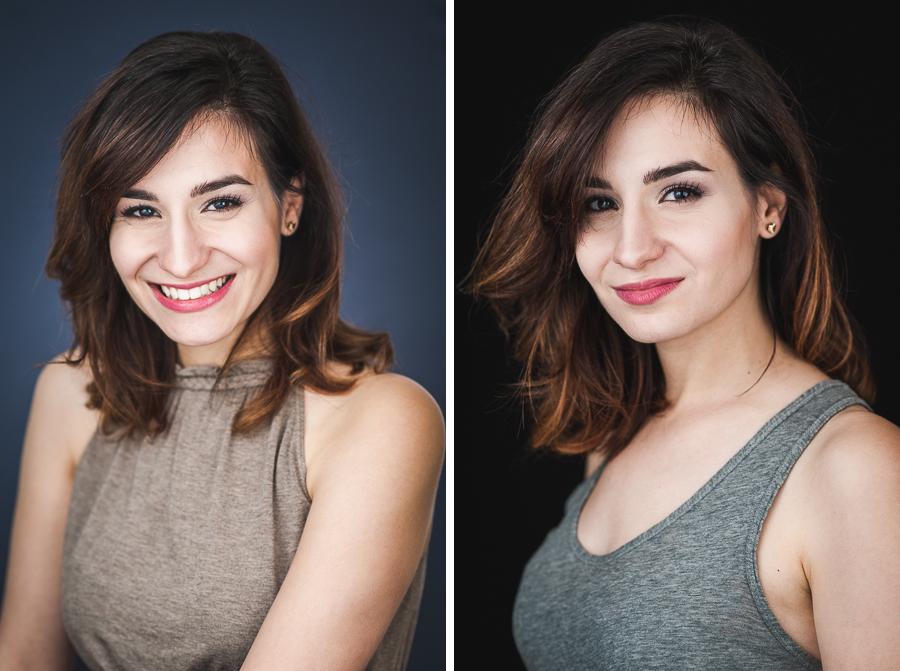
Read what Alina had to say about working with me: Getting photographed by Alex is a wonderful experience. He genuinely cares about getting your best shots and will gently direct and coach you between snaps to ensure you'll look your best, yes, but also look relaxed, natural, and like YOU. He is professional, prompt, and courteous. You'll feel at ease and guided through the whole process - never left in the dark about what's going on. […] On top of everything else, he is an interesting and sincere person. Thanks Alex! - Alina (Read her full testimonial at my client testimonials page!)
Aww, thanks Alina! It was nice working with you too!
I want to return the favour and talk about projects she’s currently working on. Alina has a fun upcoming show in the works called Stage M - it’ll be a show about the behind-the-scenes of the entertainment industry in Montreal. But if you want to see her before that, she’ll be co-producing and acting in a play in next year’s Festival St-Ambroise Fringe de Montréal. Lastly, I also want to thank tattoo artist Marie Mallouh for hair & make-up!
If you're interested in seeing more acting headshots and portraits, check out my portrait and headshot portfolio. Keep up with me by following my public Facebook page or Instagram page, and feel free to jump down the rabbit hole of related blog posts below. Thanks for reading!



